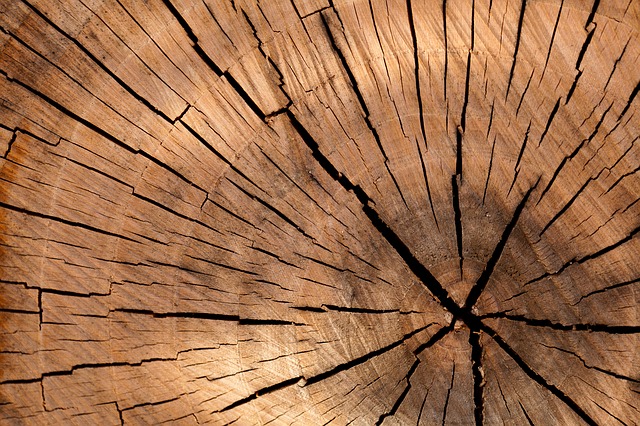Revealing eight kitchen cabinet wood types
The world of kitchen cabinetry is a large one. Who knew there were so many aspects, details and choices? I speak as a general consumer, not an expert, but I did find it necessary to educate myself on some basics. Sure, I had heard of most of the different wood species and various types of lumber, but I couldn’t begin to tell you what they look like individually or what set them apart from each other. I discovered the knowledge to be rather important and useful. I appreciate that you are perusing this site, so let me save you multiple trips to Wikipedia with a quick wood roundup:
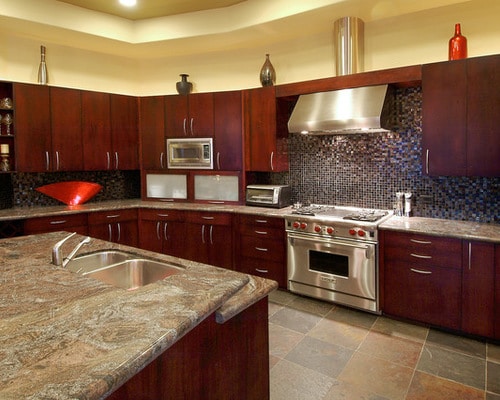 {Picture Reference to Houzz}
{Picture Reference to Houzz}
Cherry
An elegant high-end wood that is extremely desirable and in-demand is cherry wood. Reddish and light pink in color, it is strong and durable (though not necessarily considered a hardwood) and will resist most chips or dents. It is used as high-end material for kitchen cabinets from which it elegantly compliments both the traditional and modern motifs with its naturally dark shade that adds a sense of luxury to the room. It is compatible with most stains, although it is preferred overall in deep mahogany and walnut shades. Whether finished in high gloss or matte finish, cherry emerges looking terrific. Plus, they naturally darken over time eventually achieving a unique beautiful patina.
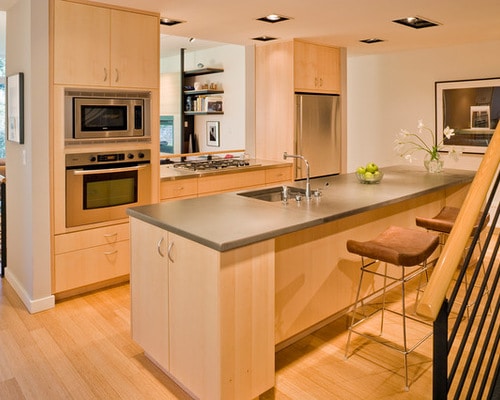
{Picture Reference from Houzz}
Maple
With its naturally pale and creamy complexion, Maple is beloved for its exquisite texture and uniform grain. It is quite durable and stains well in a variety of colors that add depth to the already beautiful material. In fact, the natural red-toned streaks in the wood deepen profoundly when stained, while random dots and swirling grain complete the image of an extra fine surface. When used as the primary source of a cabinet it portrays a look of rustic integrity. It has a natural warmth all its own.
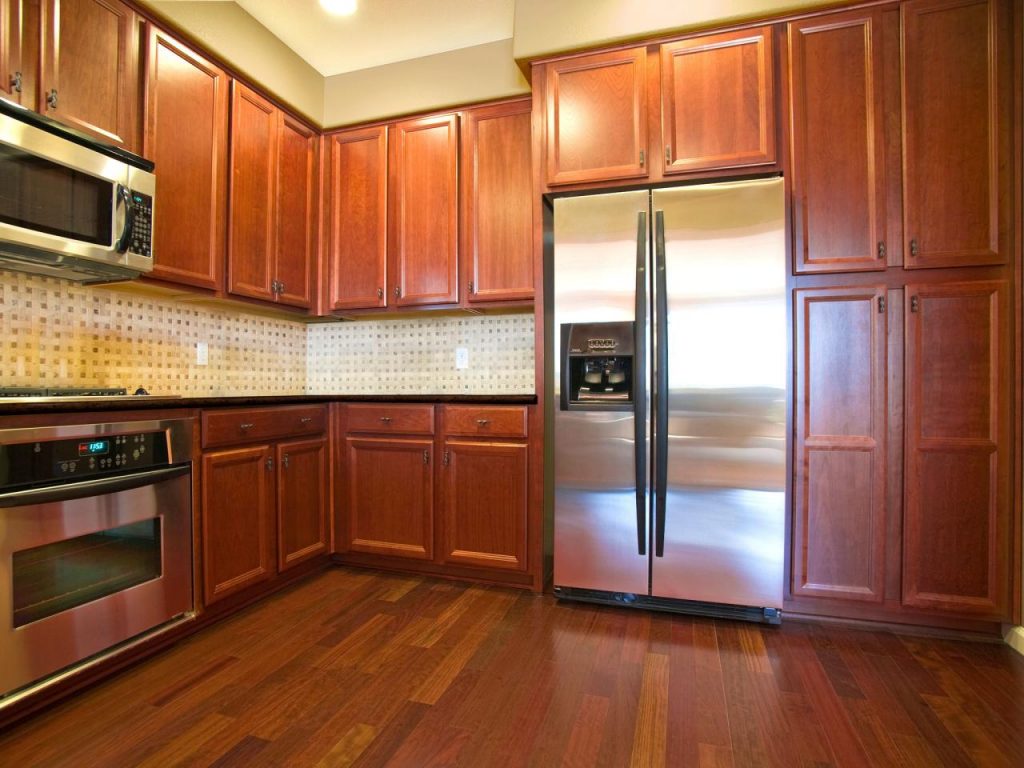
Oak
Truly a favorite among homeowners, oak cabinets combine strength, distinction, durability and affordability. Its inherently porous surface takes to stain well with a fiery grain pattern associated specifically with its species. It is the preferred choice for urban and country kitchens contributing to a warm and welcoming environment. Its grain is more effectively exploited when treated with darker stains, enhancing the grain as brown or black making it ideal for most settings. For a more contemporary appearance, light honey stains are used. Oak is lightweight and easy to maintain. It’s also sturdy and will withstand typical daily abuse. No doubt attractive, it is an inexpensive hardwood option.
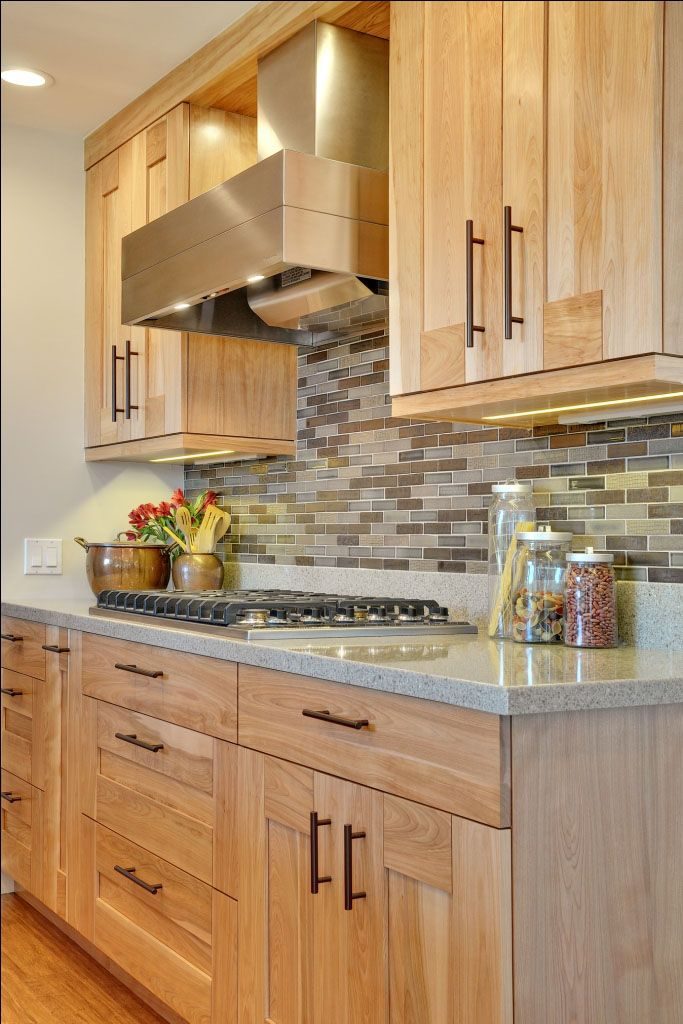
Birch
Less expensive that most of its counterparts, birch is in fact sometimes referred to as the “poor man’s cherry wood”. It is known for its adaptability, and lends itself to an array of fashionable styles. It’s a bit generic, with a uniform appearance that makes it ideal to be finished to imitate other wood grains. When done well, it can successfully mimic mahogany, walnut or maple. Birch has a closed non porous surface and is used for many decorative treatments. It is typically the strains yellow and sweet birch chosen for cabinetmaking, as they are both durable and keep nails tightly inserted.
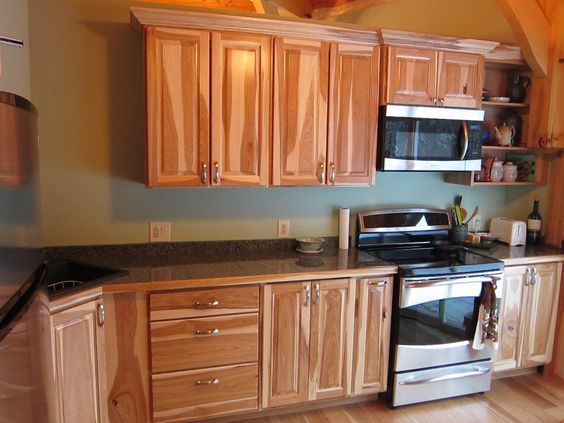
Hickory
With a long history of country use, hickory is known for its unique two-toned appearance. Natural streaks of light white and dark reds contribute to wildly varying veining. It is cheaper than cherry and hickory grain is so tight, stains can’t penetrate it effectively. It’s extremely strong, among the most durable, and hickory cabinets can last for many years. Typically they are sealed with a clear finish that highlights the subtlety multi colored surface. It’s the uneven shading that sets hickory cabinets apart, and contributes to setting kitchens apart from the cookie cutter masses.
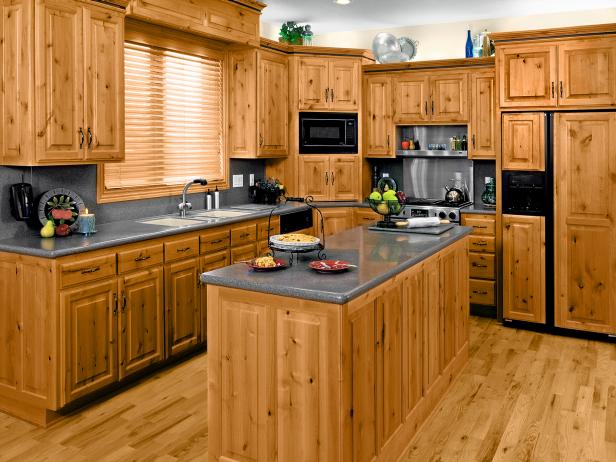
{Picture Reference from HGTV}
Pine
Most often associated with log cabins, pine is actually used quite often in modern kitchens. It is possibly the most reasonably priced solid wood on the market, a durable option that is easy to acquire. They are the preferred choice of the environmentally conscious community because pines grow quickly and not in the same shortage risk as hardwood. It is of light color and can take a wide range of stains. It takes several coats to stain pine which may reveal the knots associated with the tree.
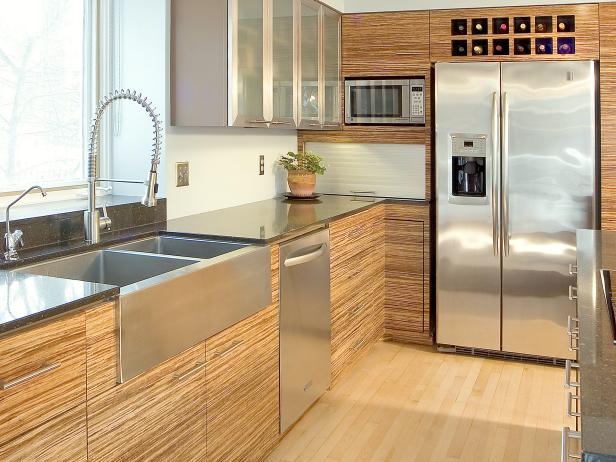
{Picture Reference from HGTV}
Bamboo
Like pine, bamboo is appreciated by the ‘Green’ set because it is a renewable resource. Whereas traditional wood cabinets are cut slabs taken from huge trees, bamboo is assembled into boards from stalks that are cut into sections. These strips are then laminated together, the direction of the grain having a direct effect on the look of the finished product. A multidimensional finish is achieved by using different grains in the same cabinet. The laminated bamboo is sturdy and scratch/dent resistant. Bamboo has an advantage over wood that shouldn’t be overlooked – it will not contract and expand at the whim of the weather (which causes premature wear). Ultimately, bamboo cabinets offer a loose and breezy quality that cannot be achieved with any other material.
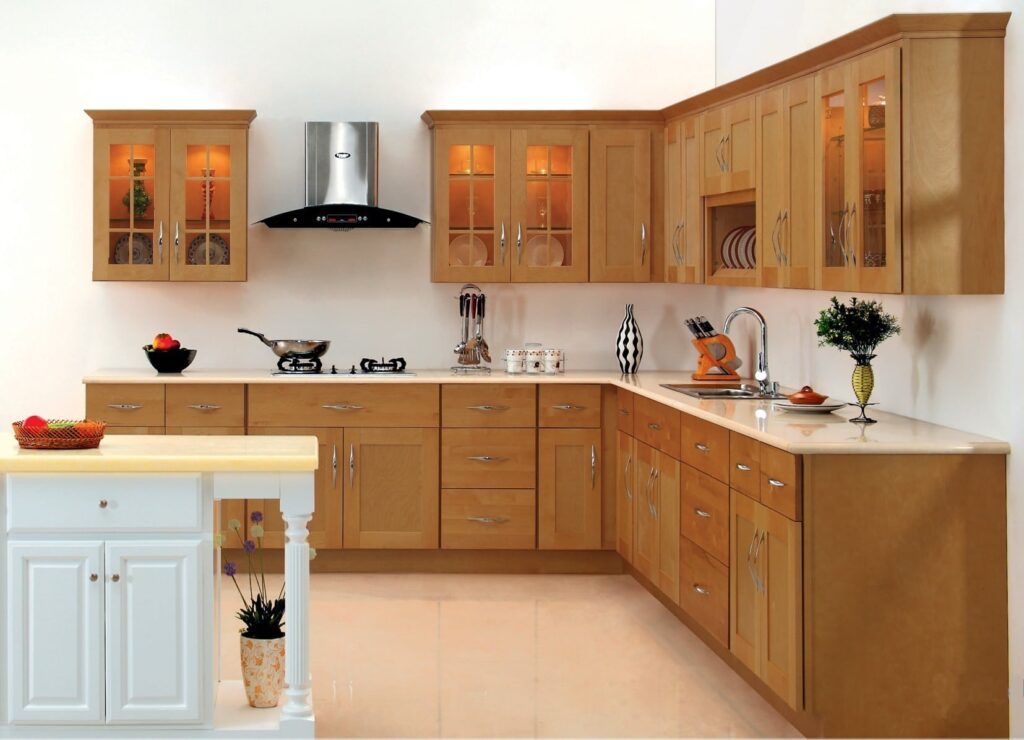
MDF
A widely used affordable alternative to solid wood, MDF (Medium Density Fiberboard) is man-made. By fusing wood fibers with an adhesive while under pressure, the boards and panels are formed. They are smoother and of greater density than particle board. MDF is the perfect choice for cabinets that are to be painted. They are commonly used to construct thermofoil, laminate, and melamine cabinets. It resists climate change and unlike other wood types will not be affected by weather extremes. This means that the paint will last and successfully withstand flaws for years.
Which wood type is right for you? For the best way to get a truer sense of what you like, check out a cabinetry showroom in person or head to a design trade show to see what’s on display there. If you’re ordering from an online business, be sure to purchase sample doors to ensure you like the color of the cabinets you’re buying. After all, pictures can be [unintentionally] deceiving.


